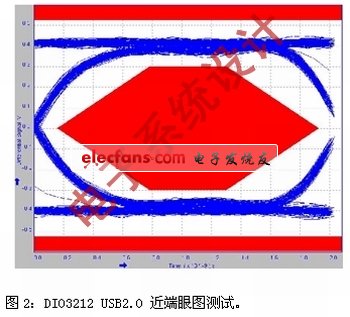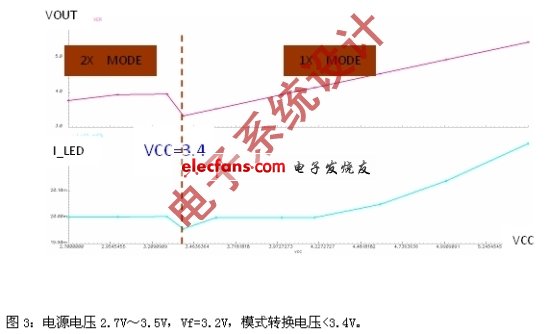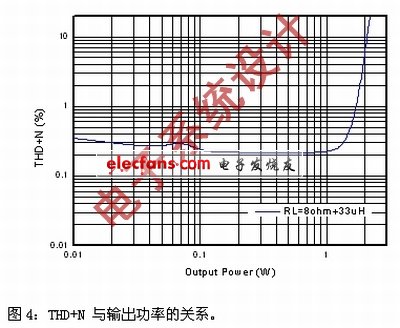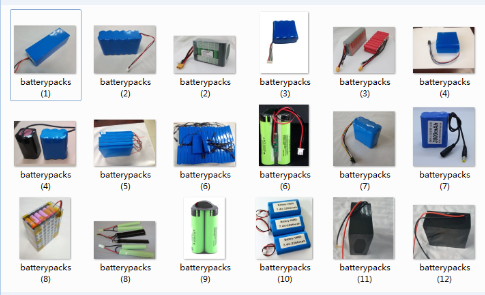In recent years, portable products have increasingly adopted multi-source designs, such as mobile phones and other portable products that require additional features such as images, video, email, text messaging, and Internet access. The bandwidth of the mobile phone signal transmission, the efficiency of the battery, and the EMI requirements are becoming more and more strict, so the design requirements for the audio chip, the USB interface chip, and the high-efficiency low-cost backlight driving chip are correspondingly improved. From the perspective of practical application, this paper elaborates on the specific application of high-speed USB series products and high-power amplifiers in smart phones, as well as the problems faced on the design side. While recommending differentiated product designs to meet market demands, a comprehensive discussion of the impact of product core parameters on the system is made.
This article refers to the address: http://
Figure 1 shows the current mainstream smartphone design architecture. The following will discuss the basic points of system baseband design and the core indicators of related products from three aspects: high-speed USB2.0 switch selection and wiring requirements; system design and selection requirements of LED backlight drive circuit; amplifier design of audio system and EMI design challenges and solutions.

2.USB 2.0 Signal Link Solution
Most smartphones' baseband processing chips have a high-speed USB 2.0 (480Mbps) interface that connects to external hosts (usually personal computers) for audio and video downloads. At the same time, the baseband is equipped with a UART interface for equipment maintenance and debugging. In the smartphone design, the 5-pin ultra-thin USB 2.0 mini interface is often used, so the selection of high-bandwidth USB 2.0 switches is especially critical in the design. Insufficient bandwidth can often lead to unrecognized USB 2.0 peripheral detection. Parasitic capacitance on the link is especially critical because the USB 2.0 test has strict near-end and far-eye compatibility test requirements for the signal eye diagram.
The parasitic capacitance on the USB 2.0 link includes the output capacitance on the D+/D- of the baseband processor USB output, the on-capacitance of the USB 2.0 switch, the parasitic capacitance of the external ESD protection device (usually greater than 1pf), and the contact of the connector capacitance. Since the output capacitor and the contact capacitor are relatively fixed, once the design is completed, it is basically fixed. It is very important to use a high-bandwidth USB switch with a high ESD rating. In order to reduce the reflection of high-speed signals, the USB switch should not be placed in the middle of the USB output and interface as much as possible. At the same time, the data lines D+ and D- should minimize the vias and keep the differential impedance on the data line at 100 ohms (up and down 10%). Optimize the integrity of signal transmission.
Dioo Microcircuits' USB high-speed 2.0 switches with bandwidths greater than 1 GHz (most of the industry's bandwidth is less than 720 MHz) not only pass USB 2.0 compatibility testing, but also ESD (HBM) reaches 8KV (most industrial <4KV) ), CDM reaches 2KV, which can remove the ESD protection function attached to the data line, greatly reduce the parasitic capacitance and reduce the system design cost. Figure 2 shows the DIO3212's USB 2.0 near-end eye diagram compatibility test results (requires stricter than the far end).

3. Efficient and low cost LED backlight design
Since most smartphones use a flat design of 3 inches or more, backlight LEDs require 6 or even 8 LED lights. Taking 20mA per channel as an example, the LED drive current will be as high as 120mA or 160mA. Considering the voltage drop of the LED lamp itself and the voltage loss of the constant current source architecture, the ultra-low threshold charge pump detection circuit is especially important for system power efficiency. This also avoids the frequent start of the charge pump inside the chip, effectively reducing the EMI of the system (usually through external pins, affecting system audio calls). LED output current matching between the vias is also a core indicator of system design (<3%). Customers are advised to use a charge pump start threshold of less than 200mV when selecting a high current output LED driver chip, based on the LED driver chip of the one-line dimming mode.
Dior Microelectronics' DIO5056 is a 6-channel 1x/2x charge pump adaptive white LED driver. The power supply voltage ranges from 2.7V to 5.5V, supports 16-step pulse count linear dimming, and uses innovative technology to ensure that the current phase matching accuracy between channels is less than 3%, and has a very low charge pump turn-on threshold voltage (see Figure 3). ). The chip also includes functions such as overcurrent protection, short circuit protection, open circuit protection, and over temperature protection. The chip shutdown current is below 100nA. In addition, the DIO5056 is packaged in a QFN16 package, which reduces the difficulty of PCB board design and reduces application cost and development cycle.

Low EMI, low harmonic distortion voice amplifier selection
With the popularity of games and high-fidelity music phones, the demand for voice amplifiers on smartphones has reached a new level. Ordinary audio amplifiers based on Class AB and Class D have been unable to meet the needs of the market. The former's low efficiency and thermal performance cannot meet the requirements of high-power output (2W or more), and the latter cannot provide power beyond the battery voltage requirement when the battery is powered. Based on market demand and design challenges, high-efficiency voice amplifiers with small package and large output capability and anti-breaking processing capability with automatic gain adjustment (AGC) are an inevitable trend in the market development. At the same time, the architecture design of low EMI radiation will Particularly important. In many cases, customers pay attention to EMI performance while ignoring the harmonic distortion (THD) specification and the 217 Hz anti-interference ability, especially in the case of output power greater than 1 W. The low EMI radiation design architecture typically results in reduced performance such as power amplifier THD. Combined with the above design challenges, the use of a low-power electromagnetic radiation, high-efficiency, low-harmonic distortion high-power D-class architecture anti-breaking voice amplifier is an inevitable demand for market development.

DIO Microelectronics' DIO2160 features an automatic gain (AGC) regulation loop with up to 28dB output and 8KV ESD protection. It is the smallest class K amplifier in the market with the smallest power output (3mm x 3mm 16-pin QFN package) Compared with the size of the competitive product 4mm × 4mm, the size is reduced by 43%, which greatly reduces the PCB area and design cost of the end customer.
5. Summary of this article
As smartphones move toward ever-larger screen sizes, higher power output and data throughput requirements, the system is designed for high efficiency, low electromagnetic emissions, small and thin packages, and robust ESD performance requirements. More and more strict. By analyzing the challenges of smart phone baseband design, this paper provides a low-system design cost and high-performance overall solution, which is conducive to the reduction of new product design cycle for end customers, thus accelerating the launch of new products.
3.6V-3.7V Li-Ion/Polymer Battery Pack
5V & 6V Regulated Li-Ion Pack
7.2V-7.4V Li-Ion/Polymer Battery Pack
10.8V-11.1V Li-Ion/Polymer Battery Pack
12V - 13.2V Regulated Li-ion/Polymer Battery Pack
14.4V-14.8V Li-Ion/Polymer Battery Pack
18V-18.5V Li-Ion/Polymer Battery Pack
21.6V-22.2V Li-Ion/Polymer Battery Pack
25.2V-25.9V Li-Ion/Polymer Battery Pack
28.8V-29.6V Li-Ion/Polymer Battery Pack
36V-37V Li-Ion/Polymer Battery Pack
46V-54V Li-Ion/Polymer Battery Pack

Li Ion Battery Pack,Lithium Ion Battery,18650 Li Ion Battery Pack,Panasonic Li Ion Battery Pack
Asarke Industry Co., Limited , https://www.asarke-industry.com